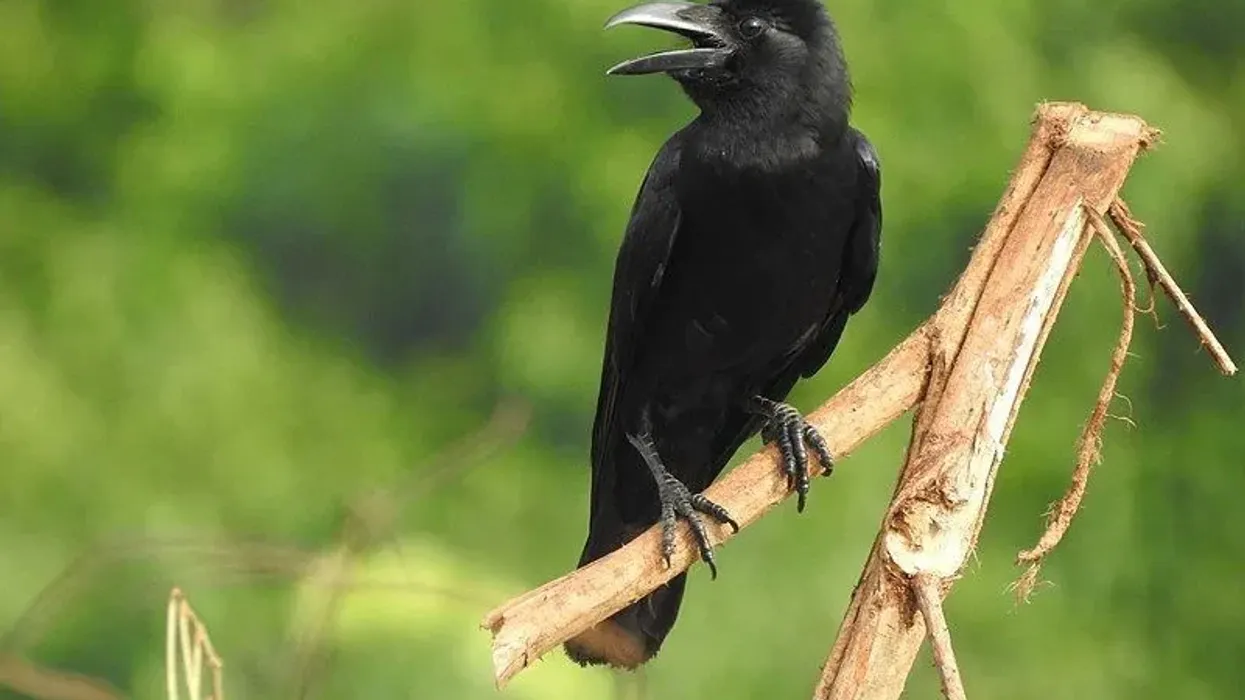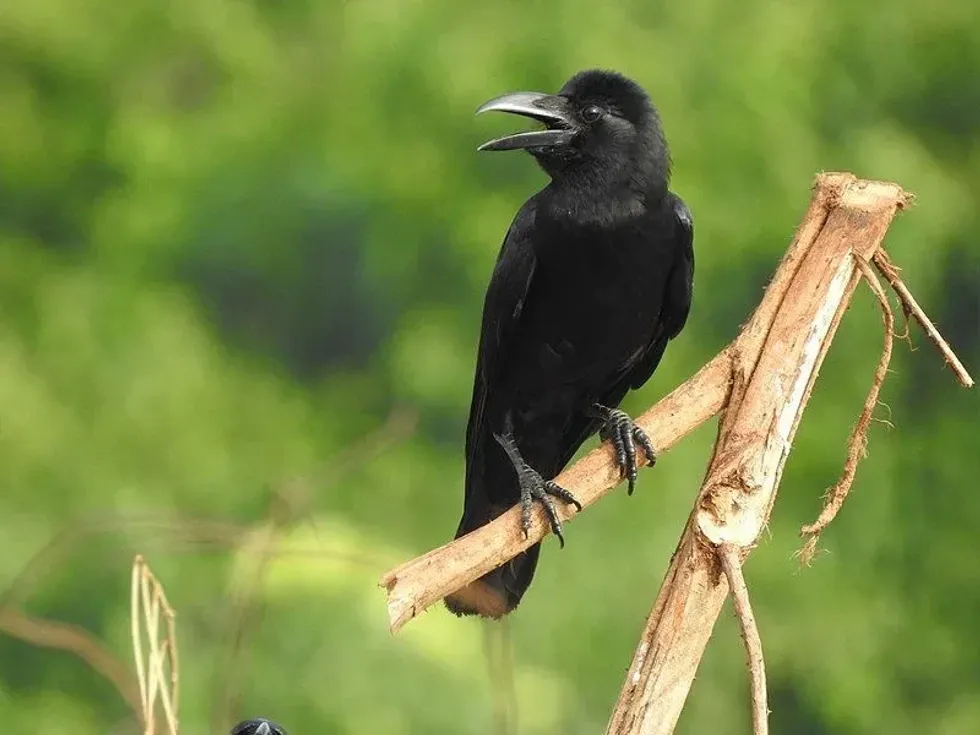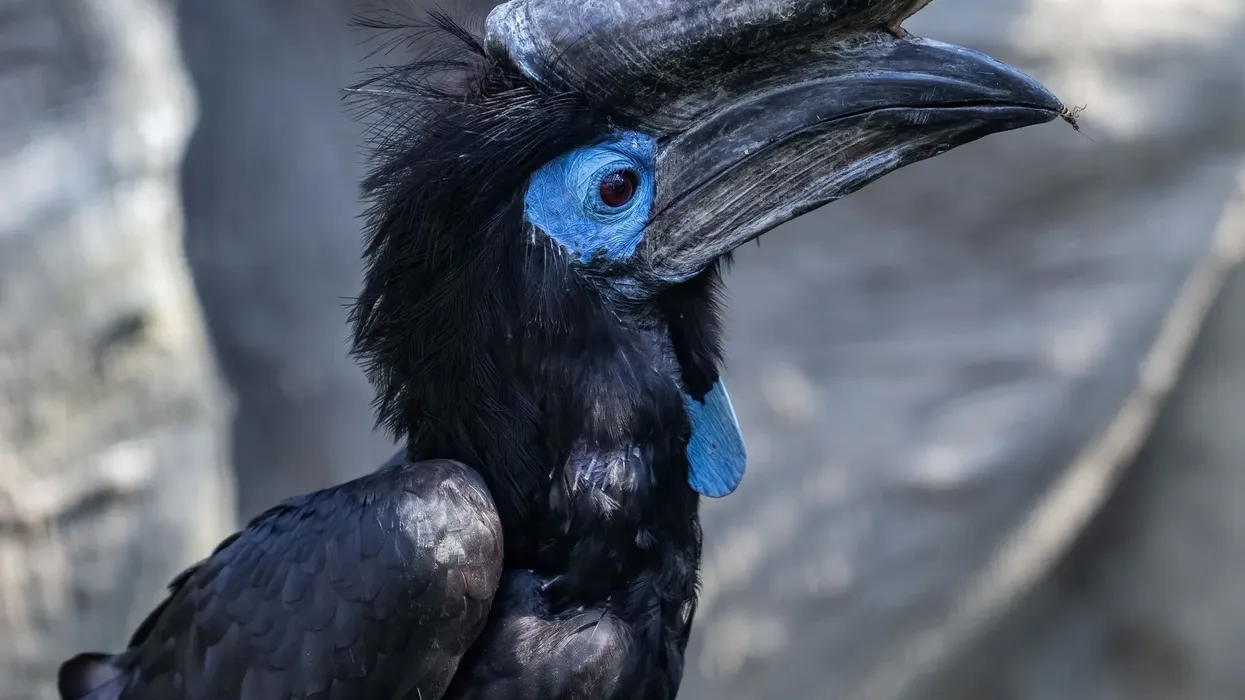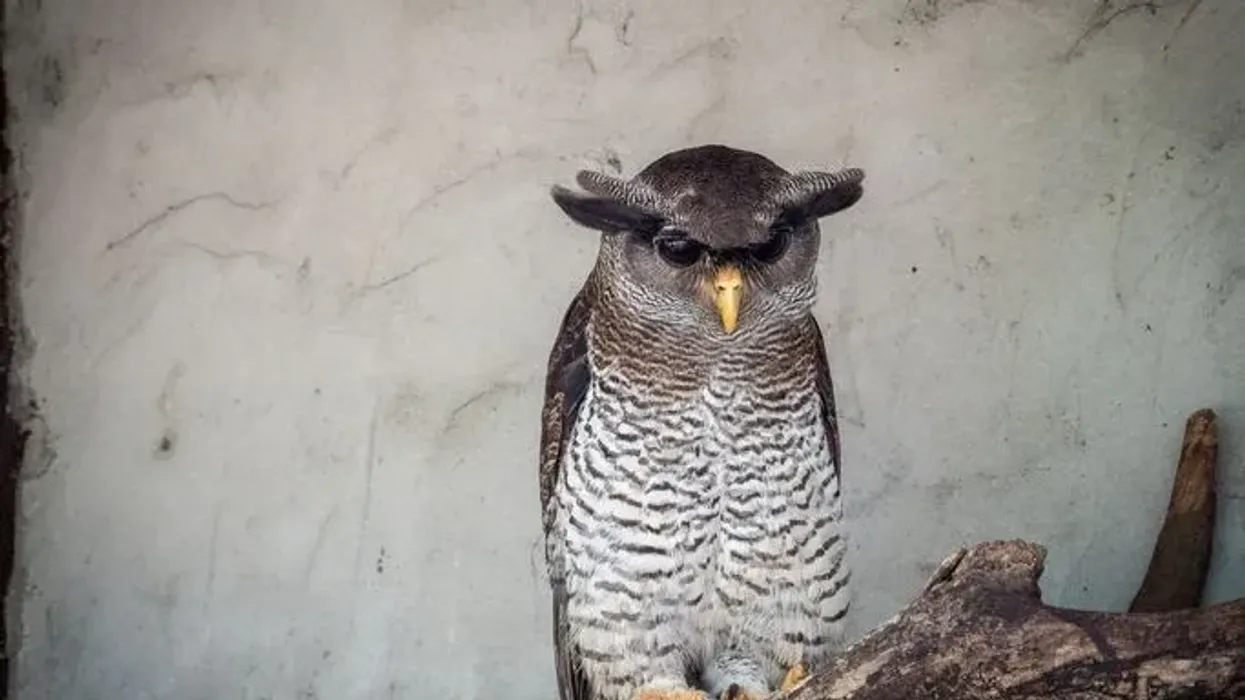The thick-billed crow, large-billed crow, or jungle crow (Corvus macrorhynchos) is a type of crow species found across Asia.
Known for its large size and thick, slightly curved bill which is akin to that of a raven, this bird is omnivorous in nature and roosts in wooded areas, large forests as well as in the open country. There are nine subspecies of jungle crows, all of which subtly differ in appearance and vocalization.
Due to its high adaptability and versatility, this species has taken over most of Asia's forests and is often considered a pest due to its high numbers and territorial nature.
To learn more about this cool crow, read on! You can also find more great bird species on our summer tanager and western tanager pages.
Large-billed Crow Interesting Facts
What type of animal is a large-billed crow?
The large-billed crow (Corvus macrorhynchos) is a species of jungle crow which is quite common in Asian countries.
What class of animal does a large-billed crow belong to?
The large-billed crow (Corvus macrorhynchos) belongs to the class of Aves, which contains all species of birds.
How many large-billed crows are there in the world?
The exact number of large-billed crows cannot be determined due to the widespread distribution as well as the sheer number of its population. However, the current conservation status of this species is of Least Concern, hence there is no cause of concern about it becoming endangered anytime soon.
Where does a large-billed crow live?
Found in Asia, the thick-billed crow distribution can be found ranging from Afghanistan and Iran through Southeast Asia in India, Japan, and Cambodia.
What is a large-billed crow's habitat?
The jungle crow (Corvus macrorhynchos), true to its name, can be found in jungles, woodlands, parks, and gardens all over Asia. It prefers to nest in coniferous trees, and a common large-billed crow habitat has also been found to be open country and urban settings.
Who do large-billed crows live with?
The jungle crow (Corvus macrorhynchos) has been observed to roost in large communities, with some roost sites housing thousands of birds at a time. They live in large groups which follow some sort of hierarchical structure, and during the day pairs of crows can be seen defending their specific territories.
How long does a large-billed crow live?
Though the exact lifespan of this species in the wild is unknown, from studying the lifespan of other crows we can infer that this species most likely lives between 10-20 years.
However, the large-billed crow is very vulnerable to the H5N1 virus, Clostridium infection, and enteritis, which has been observed to sweep through colonies like wildfire and cause large-scale deaths.
Japanese crows on the other hand are known to live for 19 years.
How do they reproduce?
Large-billed crows are oviparous in nature, meaning they reproduce by laying eggs. Breeding usually takes place from March to May, with pairs building their nests in the higher branches of coniferous trees such as firs and pines.
Crows will often scavenge wire, cloth, twigs, and other materials from garbage cans to line their nests with. The female then lays around four to seven eggs which hatch after incubating for 17-19 days.
What is their conservation status?
The large-billed crow is a very commonly spotted species, with its population being very large. Its current conservation status according to the IUCN Red List is of Least Concern.
Large-billed Crow Fun Facts
What do large-billed crows look like?
The large-billed crow (Corvus macrorhynchos) is most known for the asset which it is named after, its large beak. Its wings, tail, throat, and face are jet black, with the remaining plumage being grayish-black in color.
Its thick black bill is quite arched, which makes it look similar to a raven. It is also quite large, larger than other crow species such as the Indian jungle crow (Corvus culminatus) and the carrion crow (Corvus corone).
How cute are they?
With its large size and jet black color, the intelligent thick-billed crow is very easy to befriend and is very cute in appearance to all bird lovers.
How do they communicate?
The large-billed crow call is a 'caw' which is deeper and more resonant than the common house crow, which it uses to inform other crows about danger or potential prey.
How big is a large-billed crow?
The large-billed crow size is quite big when compared to other species of crow, their length spanning across 18.1–23.2 in (46–59 cm). They have a very large wingspan of 39.4-51.2 in (100-130 cm).
How fast can a large-billed crow fly?
Though the exact speed of the large-billed crow (Corvus macrorhynchos) is unknown, from the average speed of a crow we can infer that its flight range will be between 30-60 mph (48.3-96.6 kph). It can also execute fast dives of around 70 mph (112.7 kph).
How much does a large-billed crow weigh?
The large-billed crow is quite heavy for a bird, weighing between 15.9-35.3 oz (450-1000 g).
What are the male and female names of the species?
Crow is a sex-neutral term that can serve both sexes of this species. The male term cock and the female term hen can be used to describe them specifically as well.
What would you call a baby large-billed crow?
Baby crows are called chicks, hatchlings, or fledglings.
What do they eat?
These omnivorous birds are very optimistic and will attempt to feed on almost everything which they think is edible. They take food from the ground, from pants and trees, by scavenging from garbage or even sealing from humans sometimes!
They will catch small lizards, mice, and rodents on their own or eat acquired carrion as well, being impartial to all edible fare.
Are they dangerous?
Though not dangerous if left alone, these birds have proved to be quite vengeful from time to time.
It is said that crows never forget a person who has harmed them and will even communicate to other crows about dangerous people. They are also quite territorial and will dive-bomb and peck humans who get too close to their nests until they move to an approved distance away.
Otherwise, these intelligent creatures can be befriended by feeding them regularly, in which circumstances they may bring you small 'gifts' to show their gratitude.
Would they make a good pet?
No, crows would not make good pets at all. These highly intelligent, curious birds do not do well in captivity and need their freedom.
They are also very loud, and keeping them cooped up may reduce them to cawing non-stop, which will definitely be a nuisance.
Owning crows in the US is illegal, as they are classified as wild species of bird. Their lifespan also decreases significantly when kept as pets, which is another good reason to leave them be and befriend them by feeding them on occasion, not capturing and caging them.
Did you know...
Though similar looking to its relatives the Indian jungle crow (Corvus culminatus) and the Eastern jungle crow (Corvus levaillantii), it is much larger in size.
The thick-billed crow is one of the hosts of the Asian koel, which lays its eggs in its nest for the female crow to raise.
The jungle crow (Corvus macrorhynchos) has nine subspecies.
A crow's beak ranges in length from 2-2.5 in (5-6.3 cm).
Why are crows in Japan so big?
Crows in Japan are fairly common, to the point that they are regarded as pests. Crows in Japan are scavengers and usually feed out of the garbage, which has naturally been increasing in the country over the years.
They are known to rip open garbage bags in order to forage for food, which they get in abundance through the trash.
Due to this, they remain well-fed and are bigger in size than crows in other regions. Another reason for their larger size may be due to them having more feathers than other crows, making them look bigger and fluffier in comparison.
What is the difference between a raven and a crow?
Crows and ravens are both members of the Corvidae family. Though both of them are very similar in appearance, there are a few noticeable features with which we can differentiate between the two. Ravens are known as giant crows.
Ravens tend to have bigger beaks that are more curved than those of crows. They also have longer bristles at the base of their beaks, with shaggier throat feathers.
Their tails when unfurled fully resemble a wedge, compared to the crow's rounded fan-shaped tail feathers. The best way to distinguish between the two is by their calls. While the crow has a distinct purring 'caw', the raven has a hoarse screech which can sound quite murderous at times!
Here at Kidadl, we have carefully created lots of interesting family-friendly animal facts for everyone to discover! Learn more about some other birds including bee hummingbird facts, or golden-crowned sparrow facts pages.
You can even occupy yourself at home by coloring in one of our free printable mockingbird coloring pages.
Main image by Jameela P.
Second image by Mike Prince from Bangalore, India.









